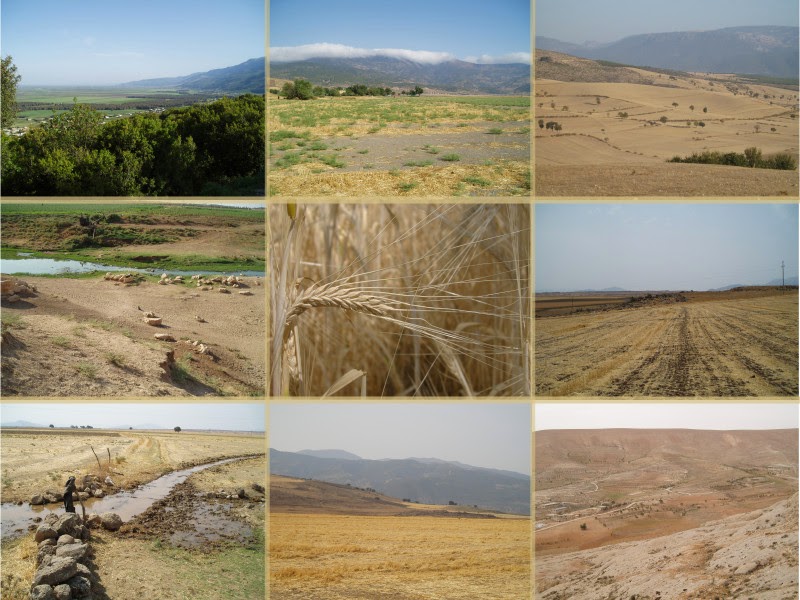
The influence of climate on agriculture is believed to be a key factor in the rise and fall of societies in the Ancient Near East. Dr. Simone Riehl of Tübingen University’s Institute for Archaeological Science and the Senckenberg Center for Human Evolution and Palaeoenvironment has headed an investigation into archaeological finds of grain in order to find out what influence climate had on agriculture in early farming societies. Her findings are published in this week’s PNAS — Proceedings of the National Academy of Sciences.
She and her team analyzed grains of barley up to 12,000 years old from 33 locations across the Fertile Crescent to ascertain if they had had enough water while growing and ripening. Riehl found that periods of drought had had noticeable and widely differing effects on agriculture and societies in the Ancient Near East, with settlements finding a variety of ways to deal with the problem.
The 1,037 ancient samples were between 12,000 and 2,500 years old. They were compared with modern samples from 13 locations in the former Fertile Crescent. Dr. Riehl and her team measured the grains’ content of two stable carbon isotopes. When barley grass gets insufficient water while growing, the proportion of heavier carbon isotopes deposited in its cells will be higher than normal. The two isotopes 12C und 13C remain stable for thousands of years and can be measured precisely — giving Simone Riehl and her colleagues reliable information on the availability of water while the plants were growing.
They found that many settlements were affected by drought linked to major climate fluctuations. “Geographic factors and technologies introduced by humans played a big role and influenced societies’ options for development as well as their particular ways of dealing with drought,” says Riehl. Her findings indicate that harvests in coastal regions of the northern Levant were little affected by drought; but further inland, drought lead to the need for irrigation or, in extreme cases, abandonment of the settlement.
The findings give archaeologists clues as to how early agricultural societies dealt with climate fluctuations and differing local environments. “They can also help evaluate current conditions in regions with a high risk of crop failures,” Riehl adds. The study is part of a German Research Foundation-backed project looking into the conditions under which Ancient Near Eastern societies rose and fell.
Journal Reference:
S. Riehl, K. E. Pustovoytov, H. Weippert, S. Klett, F. Hole. Drought stress variability in ancient Near Eastern agricultural systems evidenced by 13C in barley grain. Proceedings of the National Academy of Sciences, 2014; DOI: 10.1073/pnas.1409516111
Note : The above story is based on materials provided by Universitaet Tübingen.










